10 Geometric Art Explorations for Math Learning - WeAreTeachers
In the following activities, students utilise geometry vocabulary and explore math concepts including: measurement, area and perimeter, fractions and patterns!

1. Spiral Triangles
Create a screw design using equilateral triangles! To create the design, start out with a large triangle. Then, cutting out a triangle thats side is the aforementioned length of the big triangle's height. Paste the side of the triangle along the the center of the larger triangle, so information technology covers one-half of the big triangle. Keep on creating smaller triangles with sides that match the previous triangle's meridian to create a screw!
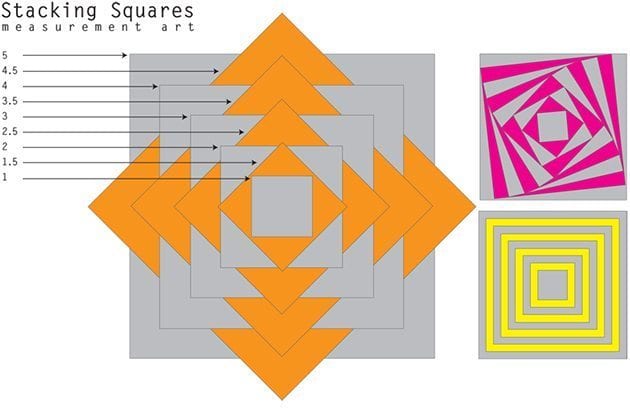
2. Square Stack
This art activeness comes from Lucky To Be In Start. Studentsmeasure, cut, and paste squares in descending order. Each square is 1/2 an inch smaller than the preceding square.
Notation: Yous could besides have children effigy out thearea and perimeter of each foursquare on a dissever canvas of newspaper.
Example
i. area = 25, perimeter = xx
2. surface area = xx.25, perimeter = 18
3. expanse = 16, perimeter = 16
4. area = 12.25, perimeter = 14
five. area = ix, perimeter = 12
6. expanse = 6.25, perimeter = 10
vii. expanse = 4, perimeter = 8
8. expanse = two.25, perimeter = six
9. area = 1, perimeter = 4
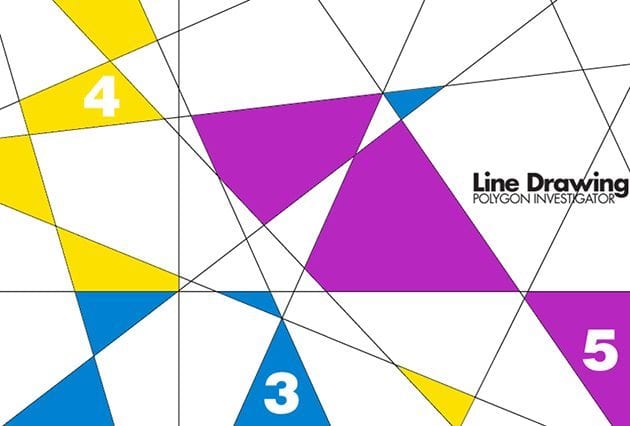
3. Line Cartoon: Polygon Investigator
Integrate math and fine art by creating a line drawing. Kids use a ruler and describe random lines on paper. And then, they go polygon investigators! They examine their artwork and color in polygons that have the aforementioned number of sides.
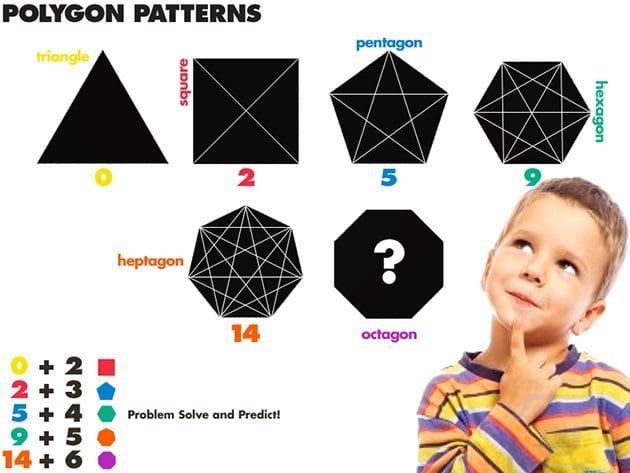
iv. Polygon Patterns
Explore vertices and diagonals while seeking patterns in polygons! Have kids predict the number of diagonals a triangle, square, pentagon, hexagon, heptagon, and octagon have. Dissever kids upward into teams. Then, accept them problem solve by drawing diagonals on shape outlines. Brand certain kids employ different colored markers for each diagonal (and then they tin can count them). Also, have a teammate tally each diagonal fatigued. Can they detect a pattern?! How many diagonals does a hexadecagon have?!
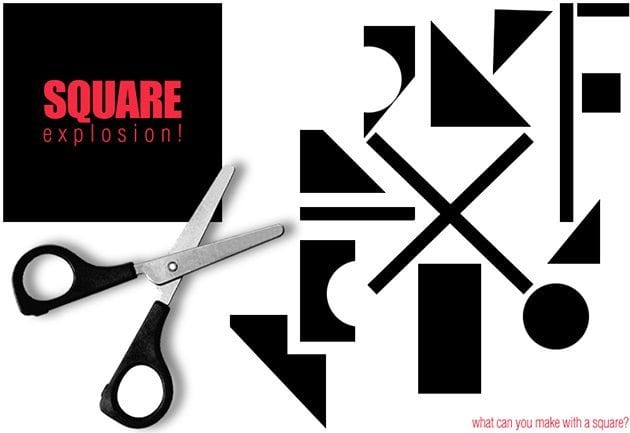
5. Foursquare Explosion
Requite kids scissors and a paper square and meet what they tin create!

6. Frac-Geo-Bot
Frac-Geo-Bot is a fun math activity for kids to get creative. They pattern a robot out of various polygons. So, they figure out the fraction for each shape and color. Older kids can design more complex bots, like the one above. Younger kids can create simpler bots, using bones shapes.
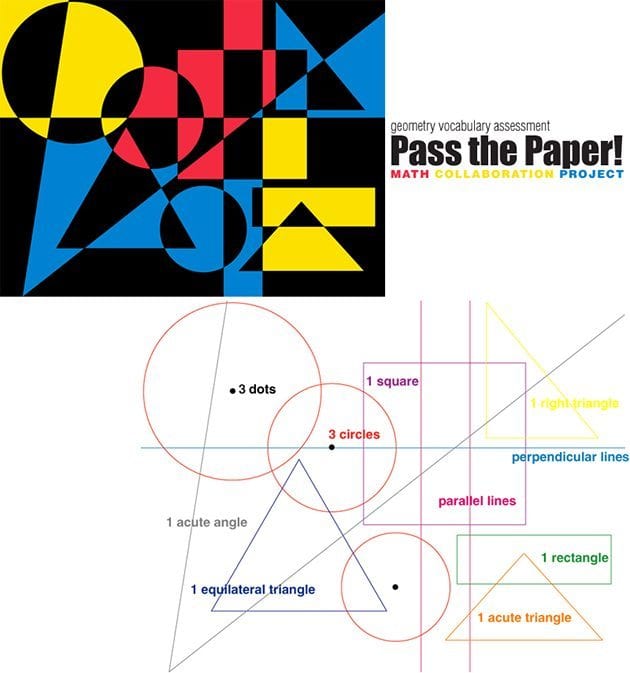
7. Pass the Paper: Collaboration
This math art collaboration project comes from Incredible Art! Kids prove their noesis ofgeometry terms by creating art! Each child is given a piece of paper. They are given an educational activity (such every bit make iii dots). Then, they pass their sheet of newspaper. Another education is given (ex: utilise a compass to create 3 circles from the three dots). Students draw on their peers' paper. Then, they pass the paper. Papers get passed around until they reach their "owner." The owner embellishes the line drawing to create a unique piece of art!
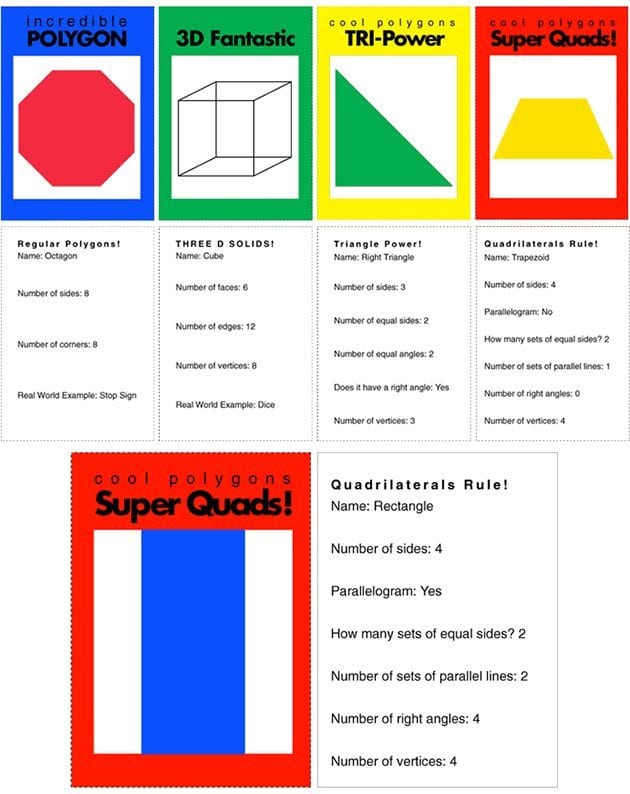
viii. Shape Trading Cards
Kids depict the shape and fill out the back of the cards. Click here for the printable.
Note: Don't cut along the center line. The card folds in half, so at that place is a front and back.
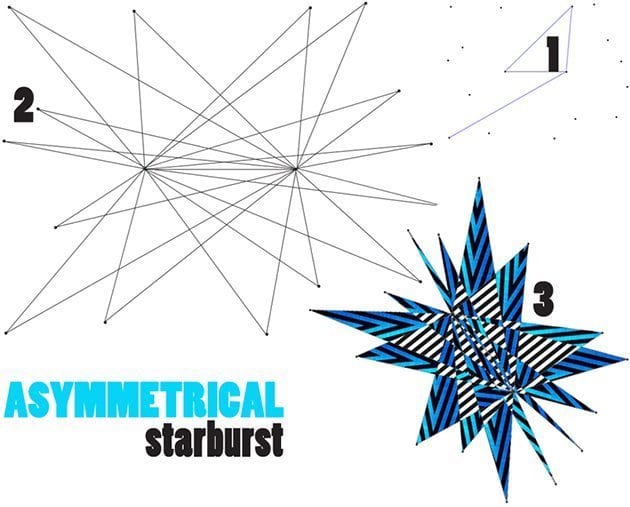
9. Asymmetrical Starburst
Students explore geometry and art by creating asymmetrical starburst designs!
1. Draw a line segment 3 to v inches long in the center of the paper.
2. Make dots around the line segment. (No dots on the horizontal line)
10 dots (5 in a higher place, 5 beneath for younger students / 15-20 dots for older students)
3. Connect the dots! – but, in a design. (Connect i end of the line segment to a dot, back to the other stop of the line segment) – repeat (end of line segment-dot-other end of line segment) – use a ruler
Note: To simplify this project have children make their horizontal line a different color or add together bright colored dots to the end of the line segment. Then, they will exist able to see where they describe their lines to.
Math Connection:Visit I Love That Pedagogy Idea for questions to inquire children while they are constructing!

ten. Mathematical Op Art
Students use their math skills to create op art! First, have students come up with a measurement for their line spacing between their parallel lines. The case has a 1/two inch gap between each line. After students describe their parallel lines with a ruler, they cull 5 polygons to include in their composition. They describe their shapes using a ruler. In one case their shapes are drawn, they create an AB pattern using two dissimilar colored markers, coloring around their shapes. And then, they get back and color their shapes to create an optical illusion! (see example).
Source: https://www.weareteachers.com/10-geometric-art-explorations/